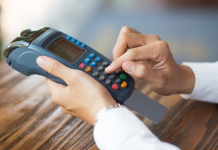Companies interact with and are affected by the forex or overseas market in various ways. Some of which include importing merchandise from abroad or exporting goods to a foreign country. In most circumstances, such transactions involve the sending or receiving of foreign currency and naturally, you’ll be susceptible to exchange risk.
Exchange rate exposure affects your business and the broader economy both negatively and positively. In fact, many companies are now exploring practical forex trading strategies as part of their approach to managing currency risks. This article outlines how the forex trading industry is changing the world of business by looking at the various measures companies are taking to safeguard their bottom lines.
1. Businesses are looking more and more to hedging
Companies are looking more and more to reducing their exchange risk exposure to stay afloat. Thus, the uptake of derivatives increases with each passing year.
Despite their justifiable reputation for complexity, financial derivatives are a good bet against risk exposure. For instance, let’s presume Company A is due for a significant payment in the next two months payable in foreign currency of €40,000. The company realizes that it could end up paying a lot more if the exchange rates change in the coming weeks.
However, with a forward contract, Company A could effectively lock the current exchange rate to guarantee that no matter how the rate moves before the time of payment, the amount payable will not change.
Following Brexit, and the drastic currency movements, a good number of UK SMEs got burnt by intricate derivative strategies meant to safeguard them against exchange rate risk; instead, the risk soared.
Like most financial transactions, we suggest people take up Warren Buffet’s tip: never invest in instruments you don’t fully understand. Nonetheless, taking caution and understanding derivatives can help businesses reap huge rewards.
2. Businesses are quantifying their exchange rate risk exposure
When faced with possible risk, the first move is to measure it. Firms are looking to quantify exposure to fluctuations in the currency markets. They determine how much they could lose in the worst-case situation. Taking inventory is one such way of quantifying risk.
Companies are listing everything that entails foreign currency. These include: overseas earnings, overseas employee salaries paid in their home currency, raw materials or equipment they must import, or investments in international funds, bonds or stocks.
Below is an example of how firms are quantifying risk.
Earnings:
- £60,000 annual sales for a UK-based company ($82,800 at prevailing exchange rates)
- €150,000 European yearly sales ($181,500 at prevailing exchange rates)
Costs:
- €70,000 in salaries for procurement staff in Europe ($84,700 at prevailing exchange rates)
- 4,000,000 Mexican pesos of incurred production costs ($214,822 at prevailing exchange rates)
3. Forex trading allows investors to own financial instruments without the need for physical relocation
More and more investors are taking advantage of online forex trading exchanges to buy and speculate on various financial instruments. No longer do you need to own physical gold or silver to claim ownership.
Speculators willing to try out the forex market but pressed for time may set their trading parameters and leave everything else to trading bots like the QProfit System trading robot to supplement their trading strategies.
Conclusion
Currency movements are nothing new, but with the world now a global village where a European company can start operations in Egypt, investors need to understand how these movements affect their bottom line and the various measures they can take to reduce risk.
Find a Home-Based Business to Start-Up >>> Hundreds of Business Listings.

















































